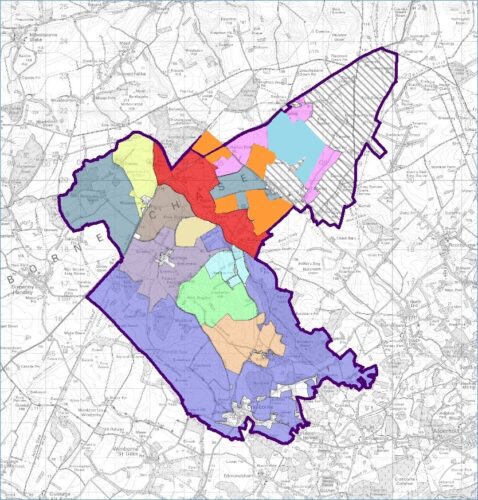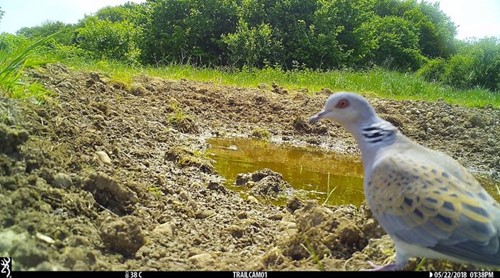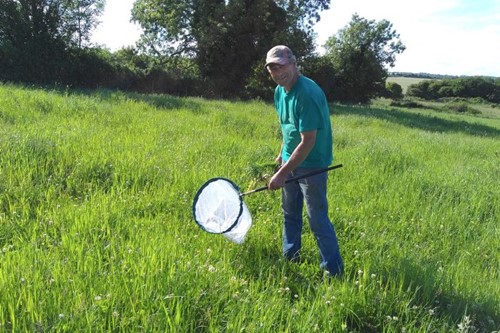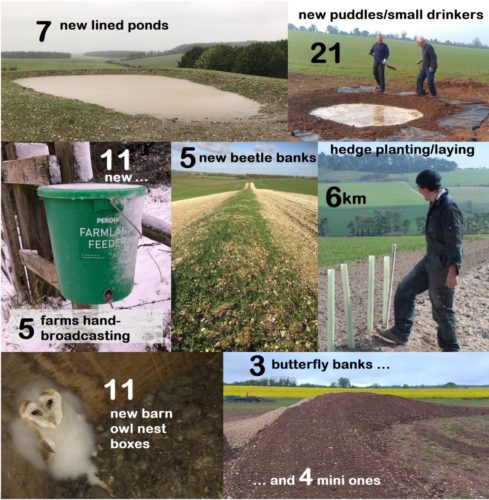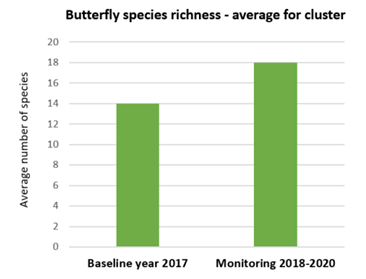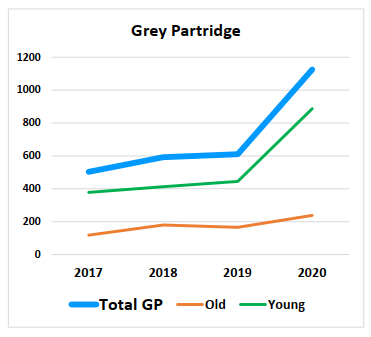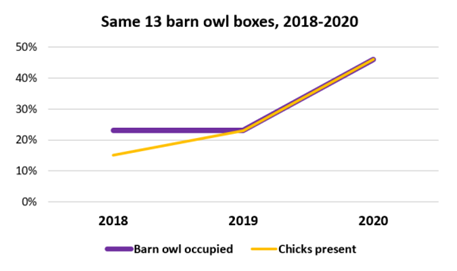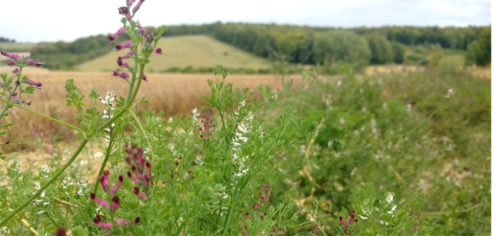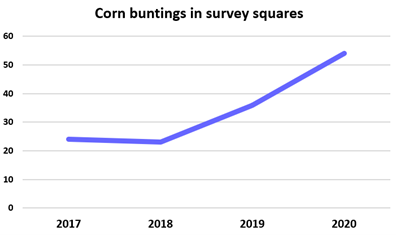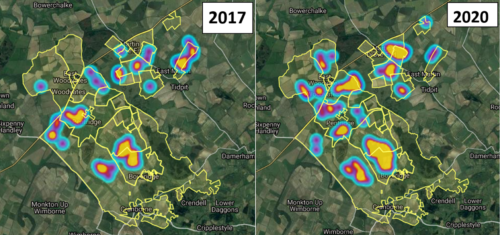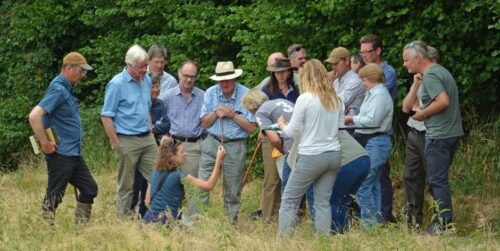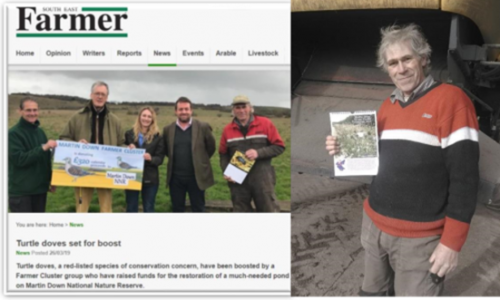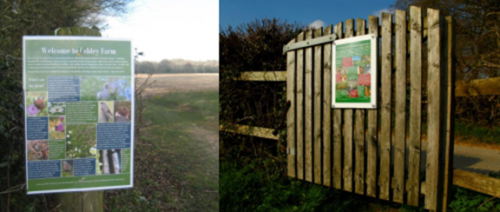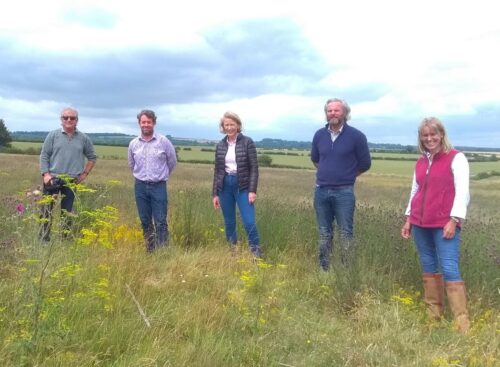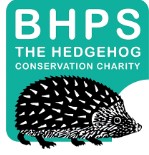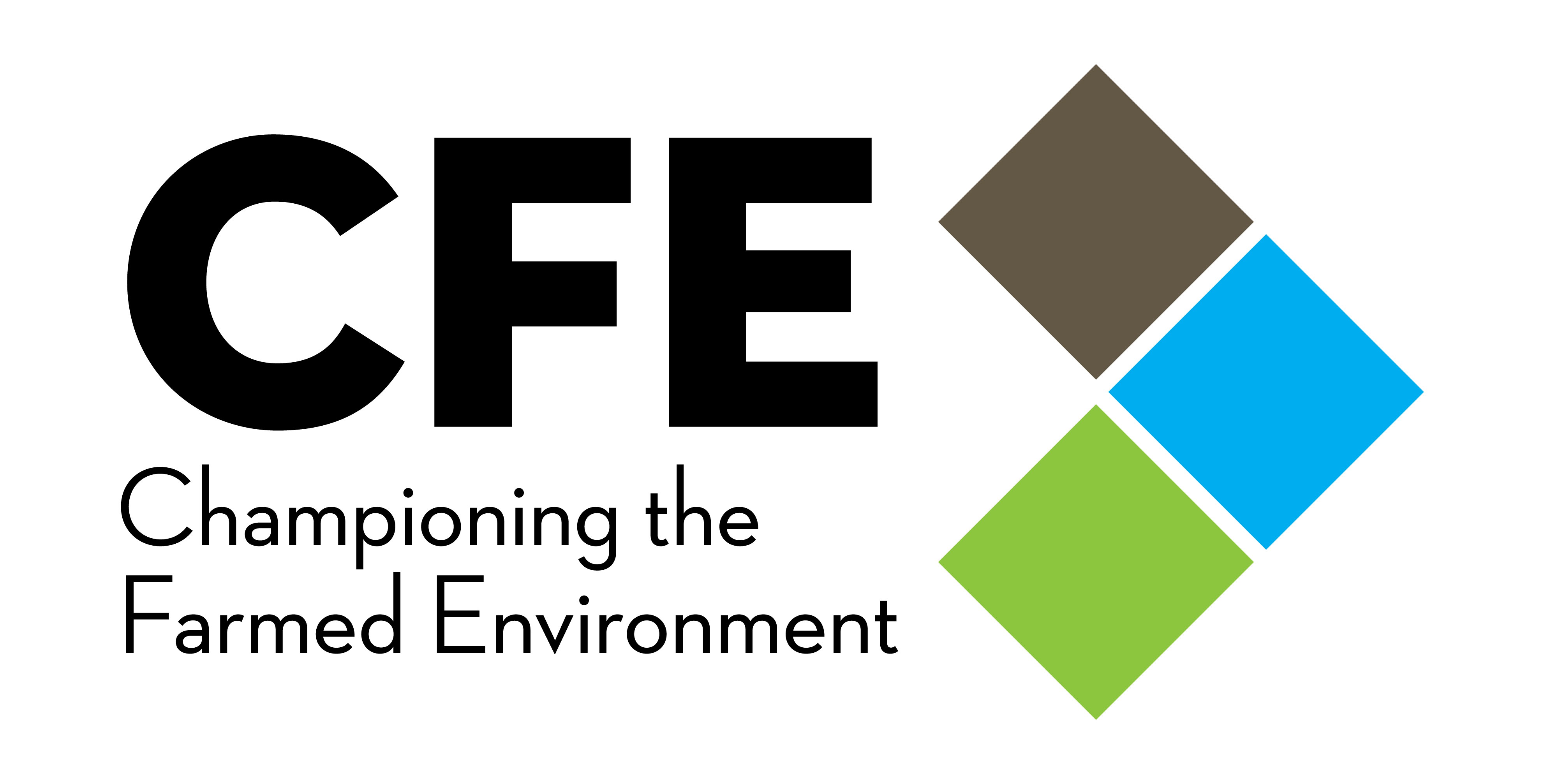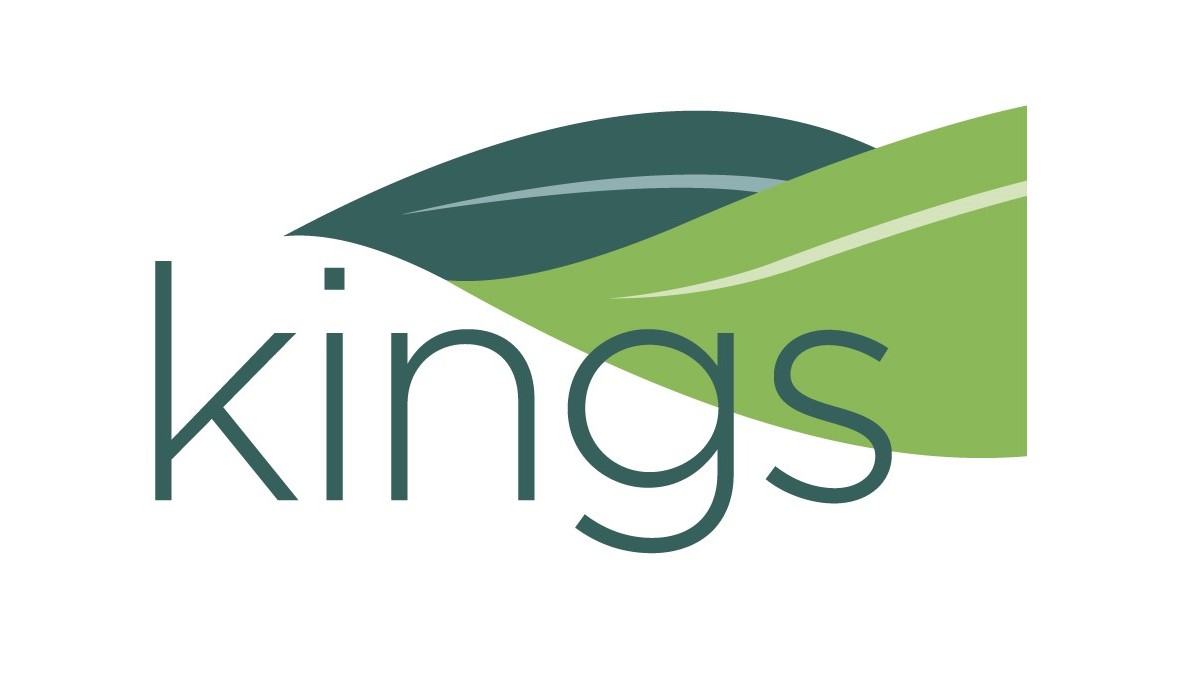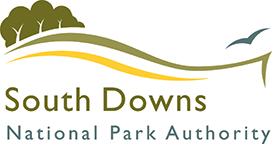Keep up to date with everything happening at Martin Down and our neighbouring clusters on Twitter – @MDSuperCluster
Established: 2016
Lead farmer: Tim Palmer
Facilitator: Megan Lock mlock@gwct.org.uk
Members: 12
Area of outer boundary (inc. NNR): 5,500 hectares
Martin Down Farmer Cluster and the ‘Supercluster’
The Martin Down Farmer Cluster is one of three Farmer Clusters surrounding Martin Down National Nature Reserve in the Cranborne Chase area of Dorset and Hampshire. Together, these three groups are collectively known as the ‘Martin Down Supercluster’ and we cradle the nature reserve on all sides, covering an area of 236 km2.
Map of the Martin Down ‘Supercluster’
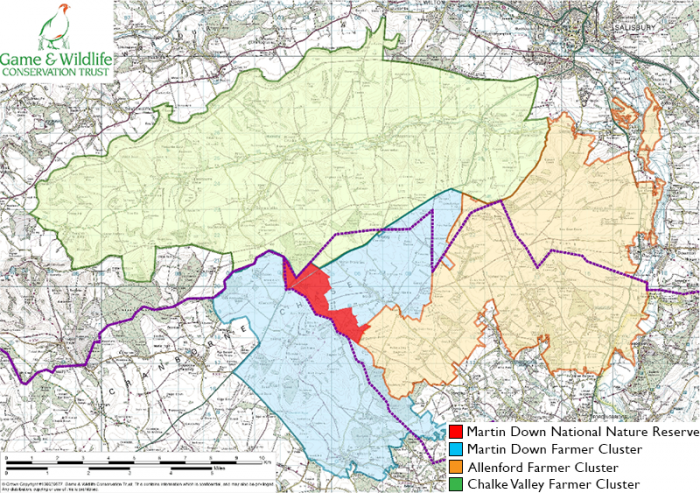
Map of the Martin Down Farmer Cluster
The Martin Down Farmer Cluster consists of 12 conventional arable and mixed farms on well-drained chalk geology which cover a contiguous area around the Martin Down National Nature Reserve. All farmer members are steering members and we meet regularly in a local pub to discuss and agree actions which are then implemented with 1:1 advice from the facilitator and local advisors. We are independently funded by a mixture of sources:
- Farmers contribute £1/ha annually
- Private charitable trust funding
- Game & Wildlife Conservation Trust
- Natural England project grants
Priorities
The farmers of the MDFC and the wider Supercluster have a common set of priorities. Collectively our aims are:
- To protect and enhance the iconic and threatened wildlife of Martin Down
- To protect, encourage and monitor the characteristic wildlife species of arable and mixed farmland
- To establish habitat links across and within the three clusters, to reconnect existing wildlife-rich features such as chalk downland.
Priority species and habitats include turtle dove, hedgehogs, orchids, lapwing, barn owl, harvest mice, grey partridge, arable flora, bumblebees, corn bunting, small blue / Duke of Burgundy / dark-green fritillary butterflies, soil organic matter and chalk stream water quality.
Species conservation & monitoring
Turtle dove have visited our newly created puddles within weeks of construction (trail camera image)
Megan Lock, the GWCT Farmland Biodiversity Advisor who facilitates the Martin Down Farmer Cluster joined the project in June 2021 and continues the long-term wildlife-monitoring effort which has been in place since 2017 to track the cluster’s progress. All farmer members have participated in the monitoring, aided by local residents, skilled volunteers, farm staff and family, and placement students.
Over 4,200 species records per year have been submitted to biodiversity recording centres and this work is hoped to continue long into the future. Doing this has really accelerated the farmers’ learning and enthusiasm, as well as informing conservation plans.
Baseline surveys
Before conservation work really starts, you have to know what you’ve got to work with. This is why we set out to survey and catalogue the wildlife on every member’s farm in 2017. Tim Palmer, chairman of MDFC says “We all remember the first meeting in 2016 when we looked at the map of our patch, the map that encapsulated not just our understanding of the state of nature on our farms but the public’s, the government’s and the world’s understanding too… and the map was blank. Now it is as thick with coloured dots as smarties on a birthday cake.” Armed with species distribution and population data, we can put conservation into practice.
Conservation
Farmers have got involved with various types of species monitoring
Farmers are participating in a range of conservation actions, by entering Countryside Stewardship or maintaining their HLS agreements, and some are even creating wildlife habitat by dipping into their own pockets.
Achievements since January 2017:
- Created over 85 hectares of brand new grass and flower margins, wild bird seed plots, cultivated margins for arable flora, arable reversions and pollen & nectar mixes
- Increased the amount of wild pollinator habitat on arable land by 50%
- Doubled the number of drinking ponds and puddles for turtle dove
- Improved hedgehog education in four villages
- Created grey partridge habitat on 600ha of the cluster area
- 9 out of 11 farmers now running Larsen traps to reduce magpie predation pressure on turtle doves
- Received a 2020 Defra Bees Needs award in the Farming Category
Species monitoring results so far
Butterflies
28% increase in butterfly species richness across the cluster since 2017 (Wider Countryside Butterfly Transects)
Grey partridge
120% increase in grey partridge across the cluster since 2017 (GWCT Partridge Count Scheme)
Barn owls
31% increase in barn owl brood attempts since 2018 (GWCT licensed barn owl monitoring)
Harvest mice
In 2020 we discovered that harvest mice have colonised all surveyed new beetle bank and wildflower margin habitats since their creation in 2018. That’s less than 2 years!
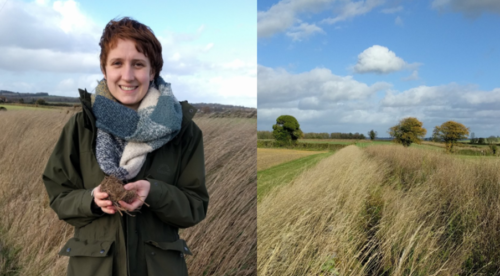 Volunteer with harvest mouse nest found on a <2yr old beetle bank
Volunteer with harvest mouse nest found on a <2yr old beetle bank
Arable flora
We have doubled populations of night-flowering catchfly and fine-leaved fumitory on selected farms using cultivated arable margins. According to the Plantlife Important Areas for Arable Plants scoring (IAPA) the Martin Down Farmer Cluster is of National Importance for its flora assemblage.
Fine-leaved fumitory growing on a cultivated arable margin
Corn bunting
Corn bunting territories have increased by 125% since 2017 (BBS-style transects across 15 x 1km survey squares)
Training and events
Alongside the farmers quarterly pub meetings, we hold training events as part of the cluster activities. Farmers decide what topics they would like to learn about. Some of these are held as wider Supercluster events too. Past events include:
- Bat talk & walk
- Farm tours (rotated around members)
- Dawn chorus walk and breakfast
- Catchment sensitive farming talk
- Christmas quiz for farmers, locals and survey volunteers
- Supplementary bird feeding workshop
- Soil research and earthworm workshop
- Visit to a wild grey partridge restoration project
- Farm insect walk as part of Defra Bees’ Needs Week
A farm insect walk held in conjunction with Buglife for Defra Bees Needs week
Community outreach
Residents in the Martin Down area have taken an interest in the project, such as joining the farmers in a landscape-scale hedgehog footprint tunnel survey and adopting butterfly transects. The Martin Down Farmer Cluster has a ‘Friends’ group, which anyone living within the cluster area can join subject to farmer approval. These local people can attend farmland wildlife events, get updates on the conservation activities in their area, and participate in surveys.
Nature reserve fundraising
We create an annual wildlife photography calendar using photos taken by the facilitator and the farmers, keepers and locals. The calendar is stocked in local shops.
- Proceeds from the 2019 calendar were donated towards the restoration of a turtle dove pond on Martin Down.
- Proceeds from the 2020/2021 calendars were donated towards grazing equipment for butterfly habitat conservation in Kitts Grave on Martin Down.
Local media covered the calendar story. Farmer Derek Woodvine with the first calendar – it was all his idea!
Farm footpath posters
The farmers are keen to engage with the wider public and visitors, so we have created a unique poster for each farm to show what they are doing for their local environment and what can be seen on the farm.
Farmer cluster wildlife information posters have been put up on all farms
Wider engagement & public relations
The Martin Down Farmer Cluster and wider Supercluster has hosted several visits for government officials, industry leads and large landowners, to share with them our experience of landscape-scale conservation.
We have featured in the following media:
- BBC1 Countryfile (2021)
- BBC R4 Today Programme (2020)
- NFU British Grower magazines (2020)
- Twitter (2019-)
GWCT represents the wider Martin Down Supercluster at the Southern England Regional Facilitators Group, which was set up in 2017 to enable the Farmer Clusters in southern England to share experiences, ideas and advice.
Left to right: Tony Juniper, Natural England Chairman; Gavin Fauvel of Martin Down Farmer Cluster; Teresa Dent, GWCT CEO; Rob Shepherd of Allenford Farmer Cluster; Minette Batters, NFU President
Videos

